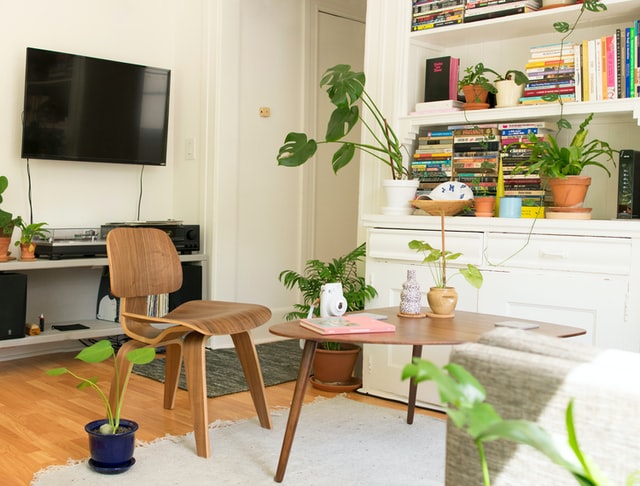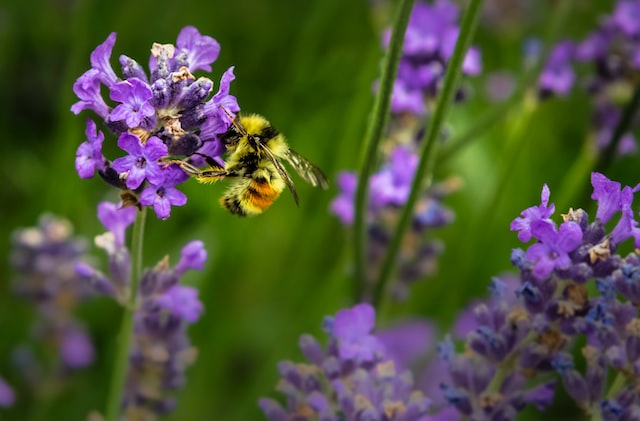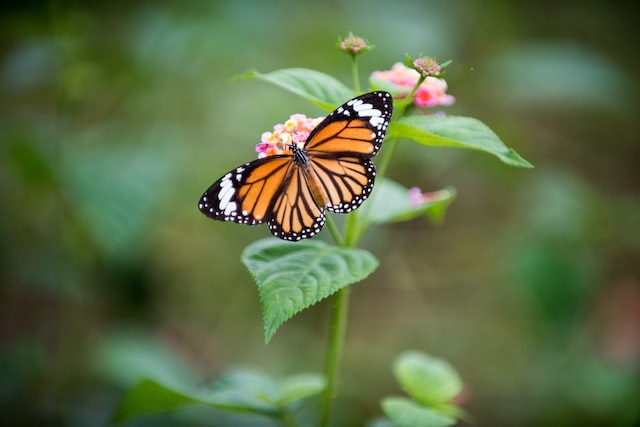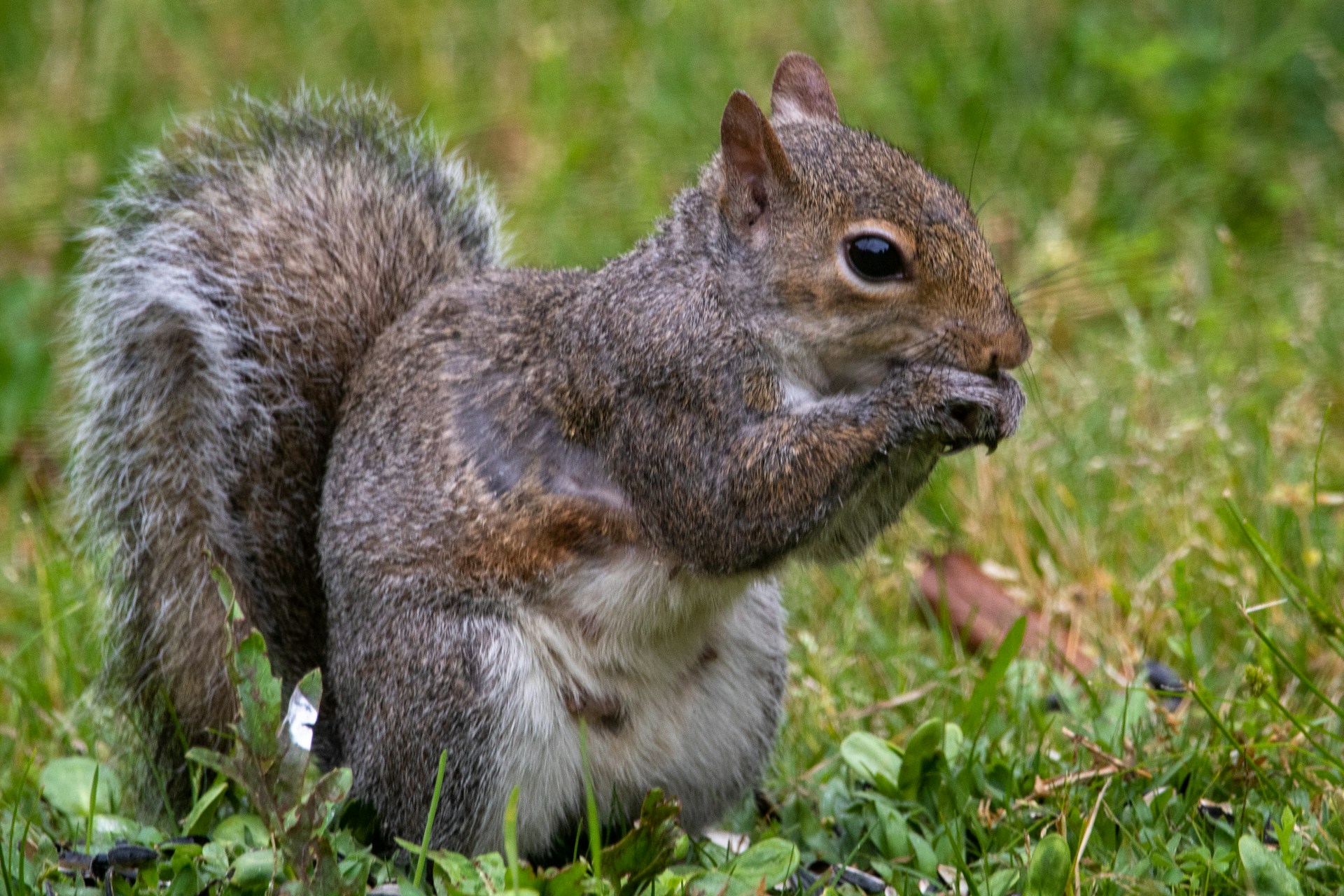You don’t have to look deeply to see the harmony and balance that exists within our natural world. The way plants, animals, and ecosystems synchronize to thrive is nothing short of a miracle. Even when that balance is disrupted, they quickly adapt to return to equilibrium. Although it may not seem like it in the world we live in today, it is instinctual for us as humans to fall in line with the ebb and flow of nature.
The nature of your environment heavily influences the way you live your life, and it requires a large amount of effort to resist its pull. The easiest way to understand why humans need nature is to look at how we sleep. People are active in the daytime and recharge at night, but not all living things are the same. Nocturnal animals are equipped with the eye structure to support seeing in low or no light. Humans don’t have that and are built to thrive in the daytime. Our natural energy sources can maintain us for the same amount of time that the sun is up, and the healthy amount of sleep we need is the same length of time it is dark at night. When we fight this circadian rhythm, we experience agitation, fatigue, brain fog, negative mood, lack of motivation, and a decreased outlook on life. To be in sync is sustainable.
Create Your Space For You
So, since we’re talking about getting back to nature, what does that look like for the individual? Of course, as humans with such unique lives, a supportive environment can look a little different from person to person. Let’s explore.
Renovating at Home
Where you spend most of your time should be the place you have the most balance and peace. Even if you aren’t a homebody and spend your time mostly at work or being social, your home is where you have the most control and where you can ground yourself. What you’re going to do is create something called a green space. Studies have shown that access to a green space promotes longer life by reducing air pollution, lessening heat concentration, and giving opportunities for physical activity. Creating a green space will provide you with a home base to return to and find harmony.
What you can create depends on the space you have available, the time you may need to put into it, and your financial ability. If you own your own home, an extensive renovation project can be worthwhile and even add value in some cases. If you’re renting or living in a more urban area, you can still do many things to facilitate a personal green space. Green spaces are great opportunities to get your family members involved in reconnecting with nature, especially children who benefit immensely from this harmony.
Backyards are the perfect place to create a green space because much of what you need is already available, like a water or energy source, and many backyards are a blank slate. Go big by installing a pond, waterfall, or stream. Make sure you use eco-friendly materials and methods to keep the water clean, like aquatic plants and fish that eat algae. A water feature can double as a wildlife habitat for fish and attract other local animals like frogs, lizards, and birds.
Kids will be especially fascinated by animals around a water feature, but they’ll also go nuts for a treehouse. You can even build one without a tree; just add nature elements like vines and a grass area to create as much green as possible.
For the young, and the young at heart, seeking a unique retreat within their green space, the classic allure of a treehouse cannot be overstated. Whether clinging to sturdy branches or engineered from the ground up, to build a treehouse is to craft an emblem of childhood dreams and unfettered imagination. It becomes a personal haven, floating above the everyday, a place where stories unfold and memories are etched among the leaves. Embracing the concept of vertical gardening, a treehouse integrates seamlessly into your green space, serving not only as an adventurous play area but also as an elevated nook for quiet contemplation amidst the rustling canopy – an eco-friendly touch to your personal outdoors that resonates with the whispers of the natural world.
Transitioning from these specific projects to more general outdoor landscaping, maintaining an attractive hedge can be a crucial element of traditional home improvement and gardening. A well-trimmed hedge not only enhances the curb appeal of your property but also contributes to your green space, offering a touch of nature and a sense of privacy. It’s a rewarding task that allows you to engage physically with your environment, nurturing plants while shaping them to complement your living space. Gardening practices such as this have been shown to improve mental health, offering a therapeutic escape and a sense of accomplishment. You don’t need to be a landscaping expert to start; simple tools and a bit of research can set you on the path to transforming your outdoor area into a lush, inviting space. In addition to hedges, consider adding flowering plants, a small vegetable garden, or even fruit trees, further enriching your green space and potentially providing fresh produce right at your doorstep.
In a smaller home or apartment, it’s feasible to create a green space indoors. You can start with getting a few indoor house plants. Areca palm, aloe vera, and spider plants are all low-maintenance beginner plants with excellent air filtration properties. You can also erect a plant wall, a great way to have plants with little space available. You can DIY your own with shelves or pallets or buy a pre-built one and then put in plants of your choosing. Philodendron and anthurium plants do well here, but herbs and lettuce will also grow in this structure.

Achieving Harmony with Nature
It’s also important to coexist with the world around you year-round and understand how to honor and respect elements of nature while prioritizing your health and well-being.
Embracing Each Season
The seasons are the tide on which nature flows that all living creatures are in tune. Plants bloom in the spring and fall dormant each winter. Animals travel miles when the weather tells them to find the area with the resources they need to thrive. Humans used the season in years past to plan their lives, grow crops, hunt, and work on their trade. While this is no longer the way of life in a world of grocery stores and non-seasonal work, listening to the seasons and harmonizing with the cycle of change is still beneficial.
Spring is a joyful time of year. It makes perfect sense that animals bear their young and flowers bloom in a time that symbolizes rebirth and growth. Staying indoors for most of the winter can create a literal and metaphorical stagnancy. An excellent way to begin the spring season is with the tradition of Spring Cleaning. Longer days and warmer weather can energize you for this activity and influence a positive mindset. Having your doors and windows open as much as possible to air out your home before it gets too hot or the summer bugs descend is ideal.
If you’re starting a garden, now is the time to prep the soil to plant sweet peas, cosmos, and Shirley poppies since they won’t thrive in the intense summer heat. For vegetables, you can grow spinach, broccoli, radish, and kale in the spring when temperatures might still drop in the evenings.
Where spring is the start of a new beginning, summer boasts fun, optimism, positivity, and life itself. Even if you work year-round, there are still several hours of daytime available after the time most people are off. With very little planning and extra cost, you can take advantage of the summer season by taking up a leisure sport with friends and family at a local park or in your backyard.
Eat your meals outdoors, go hiking, add outdoor walks to your daily routine, and even go camping on a whim once you have the essential supplies. For your garden, now is the time to plant cucumbers, tomatoes, peppers, and summer squash, which all need long and warm growth time. Marigolds, caladium, and begonia flowers do well in the heat and add color to your yard.
After a long hot summer, cooler weather, and beautiful leaf changes, the beginning of the holidays make the fall season a welcome relief. Fall symbolizes harvest and abundance, where farmers reap the benefits of their hard work all summer. In modern days, fall guides people back home and their families after a summer of living a social lifestyle and probably spending a bit of money. Now is the time to prepare for winter by switching out summer clothes and items, repairing your heater or cleaning out your fireplace, and getting those last outings in before the cold hits.
You will have harvested your summer garden, and the flowers are gone dormant. You can keep mums and daisies at this time of year, so you don’t miss out on color, and the same vegetables you planted in spring will do well in the cooler weather and garlic, winter squash, and of course pumpkin.
No matter how cold and cloudy, winter is an important season and plays its part like all the others. Symbolizing rest and reset, colder weather and shorter days force elements of nature to take a much-needed break. As much as we would love to have spring and summer year-round, that doesn’t encourage sustainability, just like constant work is not sustainable for humans. Let winter remind you to slow down, recharge, and reflect internally on what you want the next year to bring. Focus on close family and friends, enjoy the holidays, and even appreciate the snow that winter brings once a year by bundling up and going sledding or letting the kids throw snowballs.
As far as your garden, in most climates, all flowers and vegetables fall dormant in cold weather, and now is the time to prepare your soil for spring and plan next year’s planting schedule. You can begin seeding indoors in small plastic containers towards the end of winter, so you have a head start.
Living Respectfully with Animals
Understanding the role of the living creatures around your home can help you live in harmony and refrain from using extermination techniques harmful to the environment. After all, this was their home first, and they’re making the most of the sudden change to their habitat. Squirrels, raccoons, rabbits, and skunks are considered nuisance animals, but they are beneficial to the environment and can be easily deterred with a few humane methods. Squirrels play a considerable role in forest development and are critical for the survival of nut trees. Raccoons and skunks contribute to population control as they are predators in the food chain and eat harmful garden pests. Rabbits naturally eat many invasive weed species and help keep them under control.
Physical barriers will keep pests out of your garden, and you can even grow a separate area of plants and vegetables that they are free to forage in. You can find joy in watching the wildlife in your yard, especially when spring brings babies. Keep your garbage contained and away from access. Once they realize they can’t get in, they will stop trying. Also, make sure you feed your own animals indoors and keep them inside when unsupervised to prevent injury to themselves or other wildlife. With these and other wild animals such as foxes, deer, and bears — admire them from a distance, do not attempt to feed them, and contact a professional if they pose a danger or extreme population nuisance. This is usually a sign that something else is wrong, as this is not balanced natural wildlife behavior.
It may be hard to stomach, but insects aren’t all bad. You should even encourage the presence of ones like bees and butterflies for their crucial role in pollination. Bees even produce delicious honey that has natural antibacterial properties and can reduce allergy symptoms with regular consumption. If you have a hive near your home, they will not bother you if you don’t provoke them. If the hive begins to swarm, and you see many bees clustered together outside the hive, that would be the time to contact a professional to help them start a new hive. Of course, if you or anyone at home has a severe bee allergy, the hive can and should be relocated for your safety.
Bugs like ants and worms are very beneficial to gardens. They aerate the soil and should be left alone. However, ant populations can get out of hand, and in that case, there are environmentally safe ways to discourage their presence, such as sprinkling cinnamon or black pepper around your home and garden. They don’t like the smell and will move away. You can also grow herbs such as peppermint and rosemary, and these keep out mosquitoes and some spiders too. Mosquitoes are not the most beneficial insect, but you still want to find ways to discourage them without spraying toxic bug sprays into the air or on your skin. They dislike citrus oils, lemongrass, garlic, and lavender, and you can soothe the bites with aloe vera gel.
Animals Visiting the Backyard
When warmer weather arrives, many animals come out to explore and enjoy nature. Some of the visitors coming out of hibernation will explore your garden. Most animals don’t represent any danger to your family, and they can even help get rid of some insects. Keep in mind that they can damage garden furniture and flowers in the backyard. Pets like dogs or cats will help keep them away from your home. There are many ways to protect your garden while keeping the animals safe.
- Squirrels: They are charming creatures, but they can kill your plants and even damage the furniture you have outdoors. The smell of organic repellents can scare them away.
- Skunks: When trying to keep them outside of your property, they may spray either you or your house. To avoid this, you must intelligently send it away using a bright light or citrus fruits. Taking several baths and using peroxide and baking soda solutions are among the most common recommendations when you get sprayed by a skunk. Eyes should be flushed with cool water for at least 5 minutes, and call a doctor when hit in the face with musk.
- Rabbits: Rabbits multiply quickly due to their reproductive capacity. Use some organic repellent on your plants, or try dusting them with talcum powder to keep them away.
Living a Sustainable Lifestyle
You don’t have to go off-grid to live in harmony with nature. Today’s leading disruption to the environment is how humans produce much waste from purchasing cheaper materials, always needing to buy new, and throwing out items instead of recycling, selling, or fixing them to use again. By lowering the amount of waste you produce as an individual, you can reduce your carbon footprint drastically. You can also lower the energy you use, specifically in your home. Switching from incandescent to LED lightbulbs makes your home more energy-efficient and can add up over time. Insulating your home will put less stress on your heating and cooling system and save energy.
Consider renting appliances that you don’t use very often, such as carpet cleaners and power tools, and try your hand at repurposing items you do have. Many containers can be cleaned and reused, and you probably have all the ingredients to make your own cleaning solutions in your kitchen right now. Challenge yourself to go as long as possible before taking another trip to the store and buying products that come in wasteful packaging.
Nature Connection Activities
Creating balance within yourself and with nature is facilitated by awareness. Taking time away from electronic devices and activities driven by social constructs to be present in the world has shown to help manage stress, decrease anxiety, elevate your mood, and improve your outlook on life.
Whenever you can, incorporate nature and the outdoors into an event or routine. Supplement your exercise routine with hiking or swimming. Family trips can easily be nature-oriented, even with small children. Showing them a movie featuring a natural landmark can make it exciting to visit the real thing. Incorporating animals is another foolproof way to engage children. Take a moment to discuss with your children what it means to respect nature and the importance of all its many parts, even the seemingly insignificant ones, so they take care not to litter or be destructive.
Meditation has many health benefits on its own and can be boosted by doing outside or among natural elements like indoor plants, natural light, and even animal and water sounds. There’s also a specific type of meditation called sense meditation that elevates your awareness of yourself and your connection to your surroundings, so it’s best to do it while surrounded by nature.

Teach Children’s About Nature
Teaching your children to respect nature is fundamental since they are the future and now is when we have the opportunity to teach them values. The little ones will learn to respect and value wildlife, to understand how important they are for their future and how necessary it is to take care of and respect what surrounds them.
- Try to get children to interact and appreciate nature, even if you live in a city and have few opportunities to go out into the countryside. In any park in your area, you can find a great diversity of trees, plants, birds, and other animals.
- Nature experiments. Games and playful activities are perfect for children to understand anything, always through play and fun. There are plenty of homemade experiments that you can do with the little ones so that they can easily understand how nature is transformed.
- Watch nature documentaries as a family. There is nothing more effective than seeing things with your own eyes. To do this, you can get a documentary about natural phenomena.
- Teach your children to respect the work of gardeners and people in charge of maintaining and caring for cities. The little ones must be aware that, without the work and effort of all these people, the city and the parks would be dirty, the plants would not be able to grow, and they would not be able to enjoy nature as they do now.
- Family visit to the science museum. There are exhibitions about nature and the environment in many cities, specially designed for children. Discovering facts about the planets and science in general will offer your children a deeper appreciation around their surroundings. Afterward, you can reinforce everything they have learned at home, talking about what they have seen, making drawings, crafts, and other family activities.
Nature Comes Full Circle
The world has created a rhythm and flow in which all its inhabitants coexist. When it is disrupted or fought against, that existence will experience difficulties. This manifestation is apparent in events like the extinction of a species and increased global temperatures in history. The world’s population is the highest it’s ever been, with billions of humans, plants, and animals contributing. As humans, we are equipped with conscious choice, and we should use that choice to benefit ourselves, and our planet. Living in harmony with nature will give us all the best chance to thrive, and the earth too. As we can see, if we are living sustainably, balanced, and at peace is only natural.




